
Feel free to add tags, names, dates or anything you are looking for
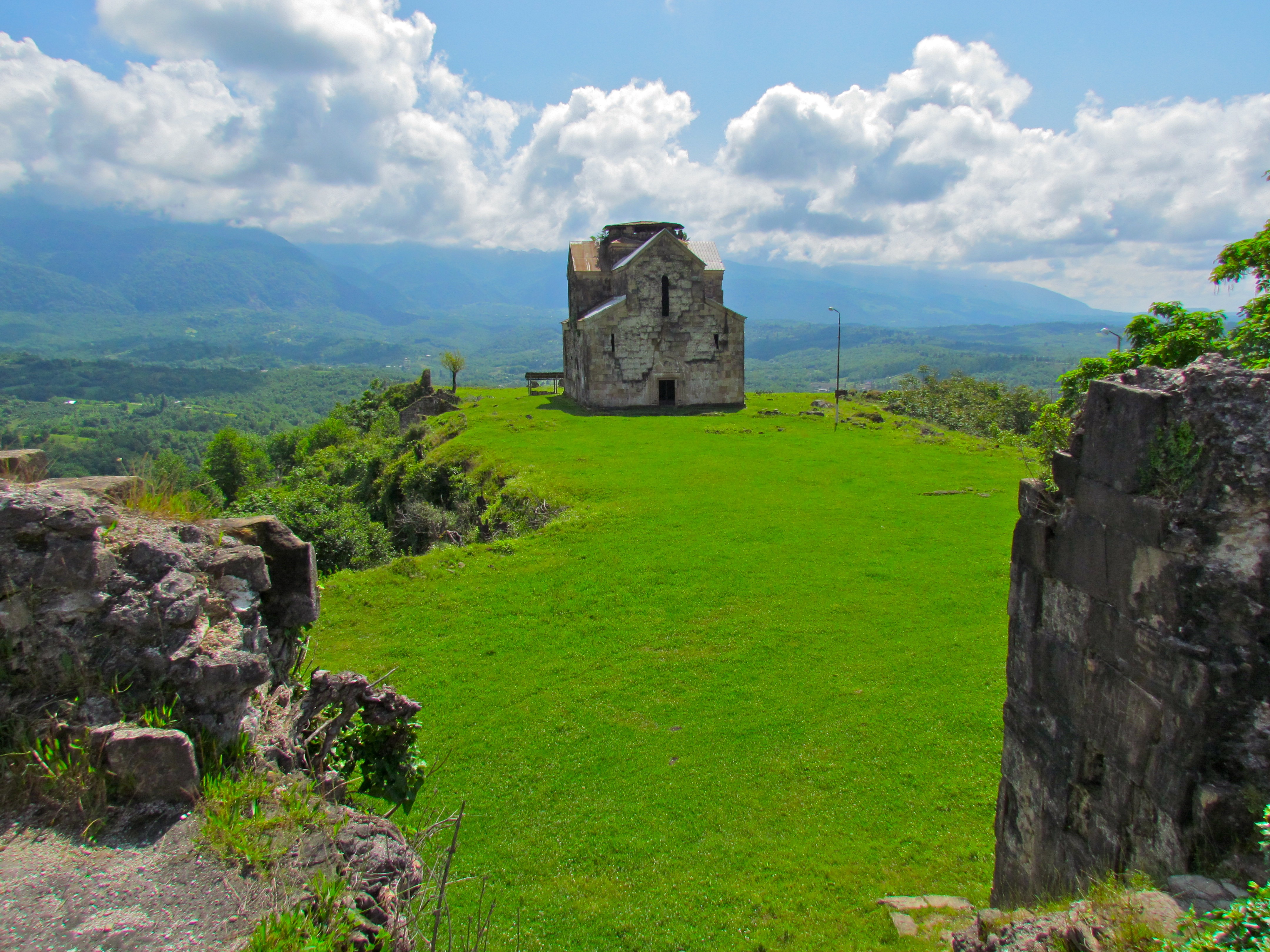
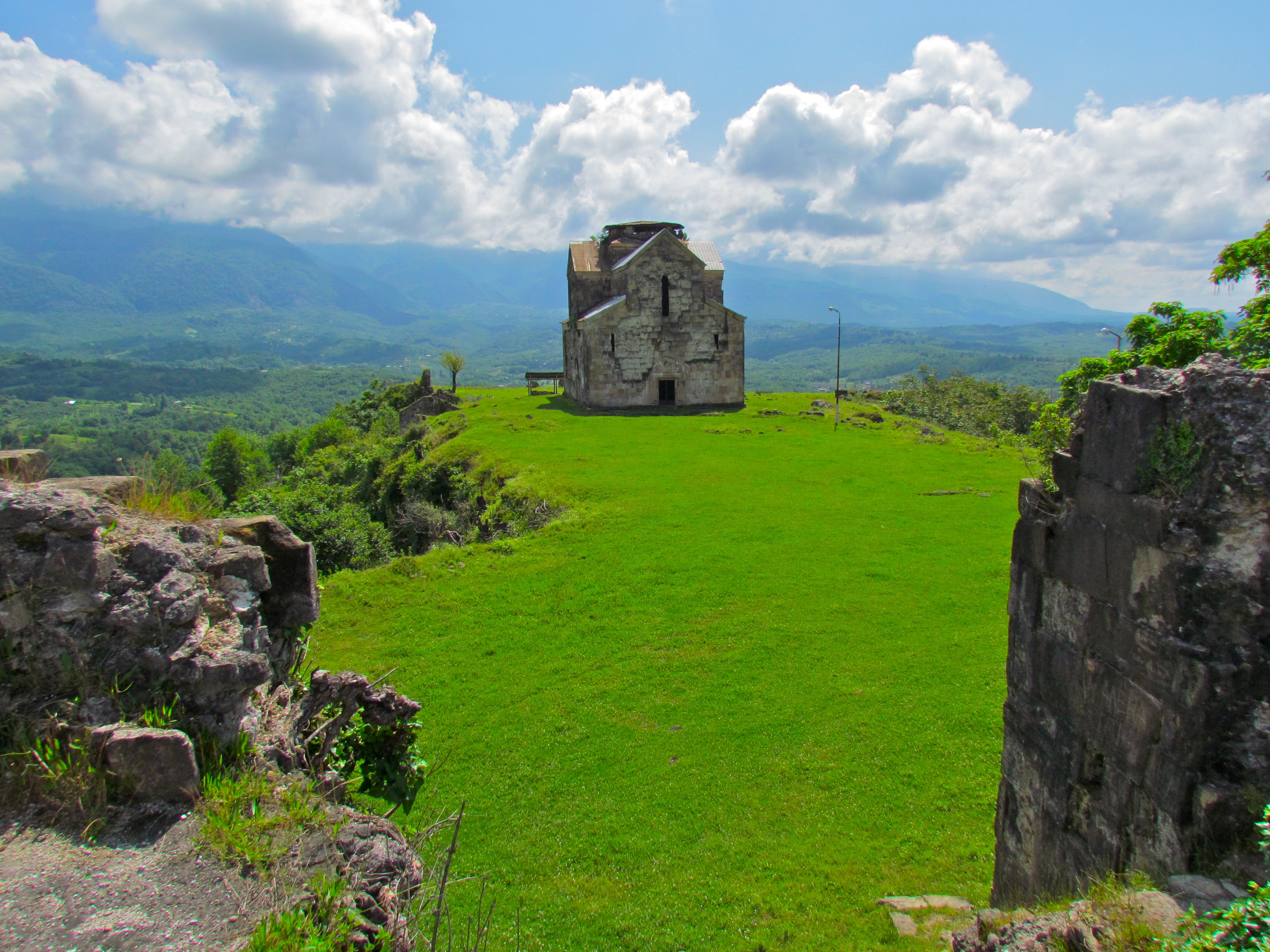
The Bedia Monastery is one of the most famous and revered Christian sites in Georgia. It is located in western Georgia, in the historical region of Abkhazeti, once a kingdom of medieval Georgia. Bedia played an important role in both the history of Abkhazeti and that of the country as a whole.
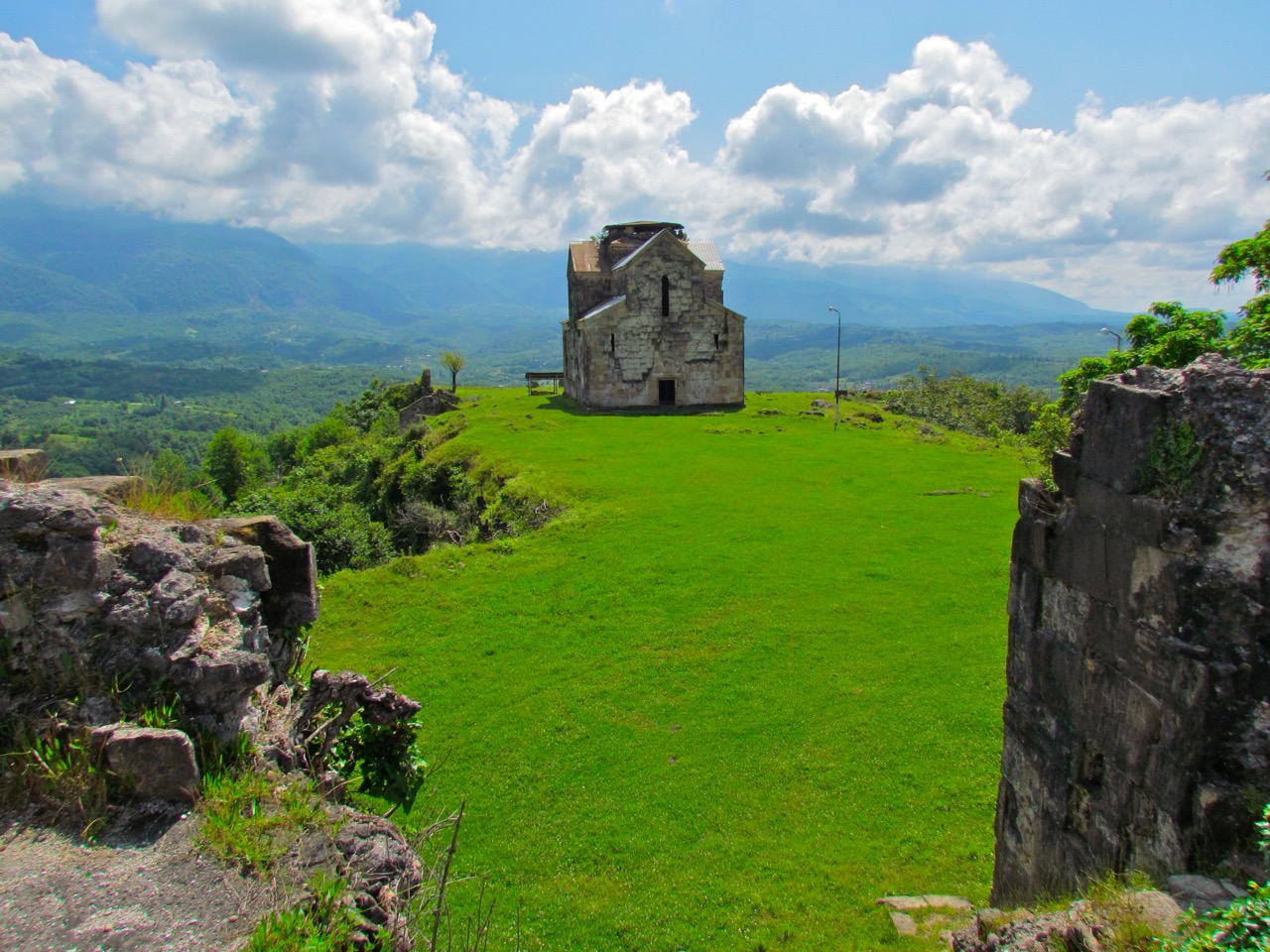
Bedia Cathedral, 11th c. 14th c.
The monastery was founded by Bagrat III, King of the united Georgian Kingdom, with his mother Guranducht, in the early 11th century. Bagrat was a member of the Bagrationi royal family, which consistently sought to unify the various feudal kingdoms of Georgia. Bagrat inherited the Abkhazian throne through his mother’s lineage, and the throne of Kartli through his father’s. As such, he had a legal right to unite all the Georgian kingdoms. In later life, he founded a episcopal see in Bedia, and, upon his death, was buried in the church.
For many centuries, the Bedia monastery was one of Georgia’s most significant religious, cultural and educational centers. Due to the importance of the Bedia Episcopal See, David the Builder, the King of All Georgia (r. 1089-1125), granted the archbishop of Bedia the title of Bedia-Alaverdeli (Alaverdi being a major religious and cultural center in Kakheti, eastern Georgia). This act symbolized the political and ecclesiastic unity of East and the West Georgia.
The Bedia monastery is located near the regional center of Ochamchire. It comprises a large main church dedicated to the Virgin, the ruins of a smaller church, a bell tower (14th c.), and a two-storey bishop’s palace (16th c.), all enclosed by a circuit wall. At present, the buildings of the monastery are in very poor condition. The cathedral of the Virgin stands without its dome and the exterior facing of its walls is missing.
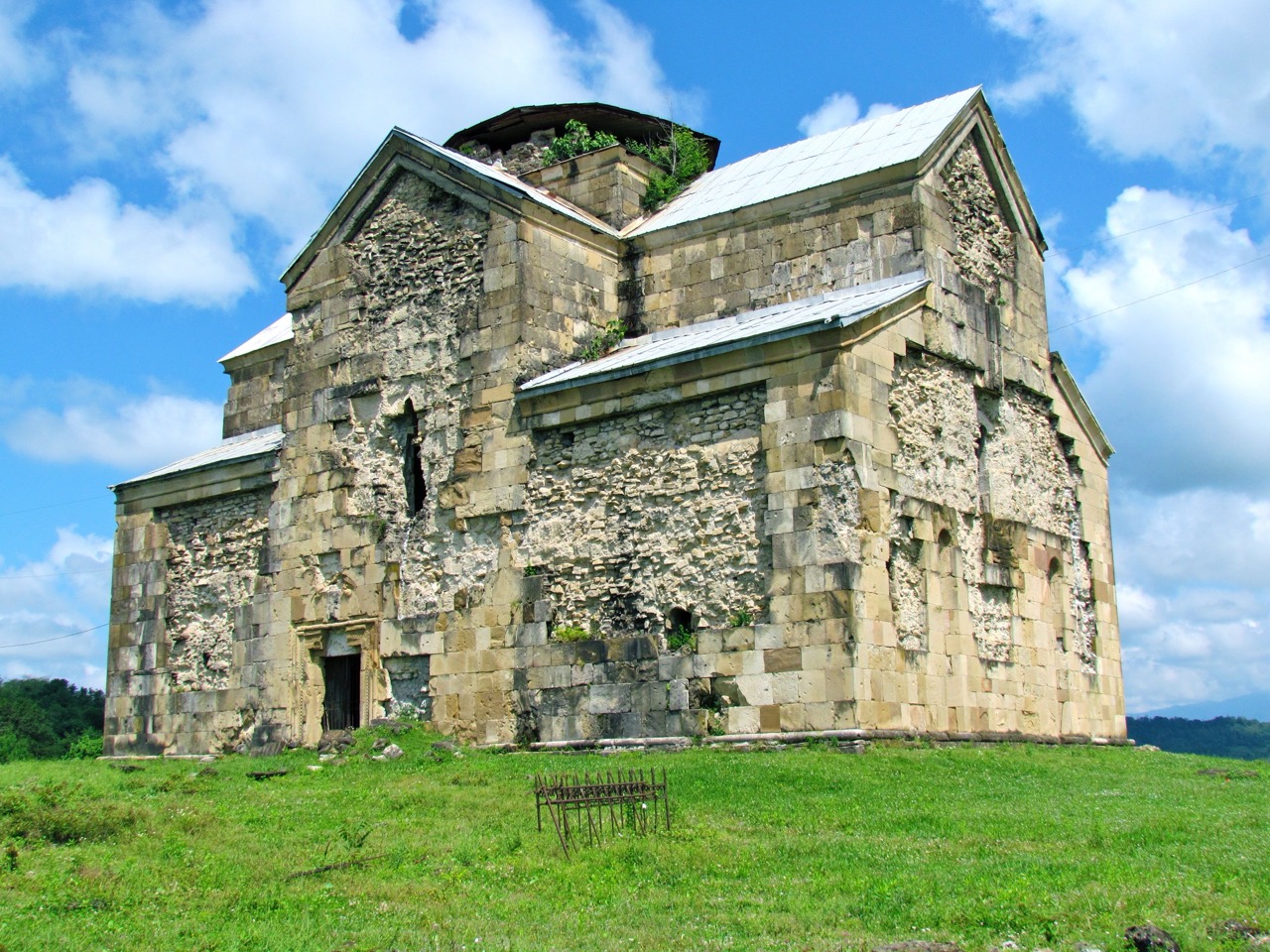
Bedia Cathedral, view from south-east
The Church of the Virgin is of the cross-inscribed domed type, a form that became common in Georgia in the 7th -8th centuries, and especially widespread in the 11th -12th centuries. It was constructed with finely cut ashlar and once featured numerous carved stone ornaments.

Bedia Cathedral, west portal, 14th c.
Given the importance of the site, the monastery underwent multiple phases of restoration and renovation: in the 11th century, then in the 13th - 14th centuries and in the 16th to 17th. As a result, Bagrat III’s original structure has largely disappeared, and the majority of the existing building reflects the 14th century reconstruction. However, the ground plan and the main spatial design remains mostly intact. The cathedral was architecturally grand and impressive – both externally and internally, and was regarded as one of the most significant monuments of early 11th century Georgian architecture.
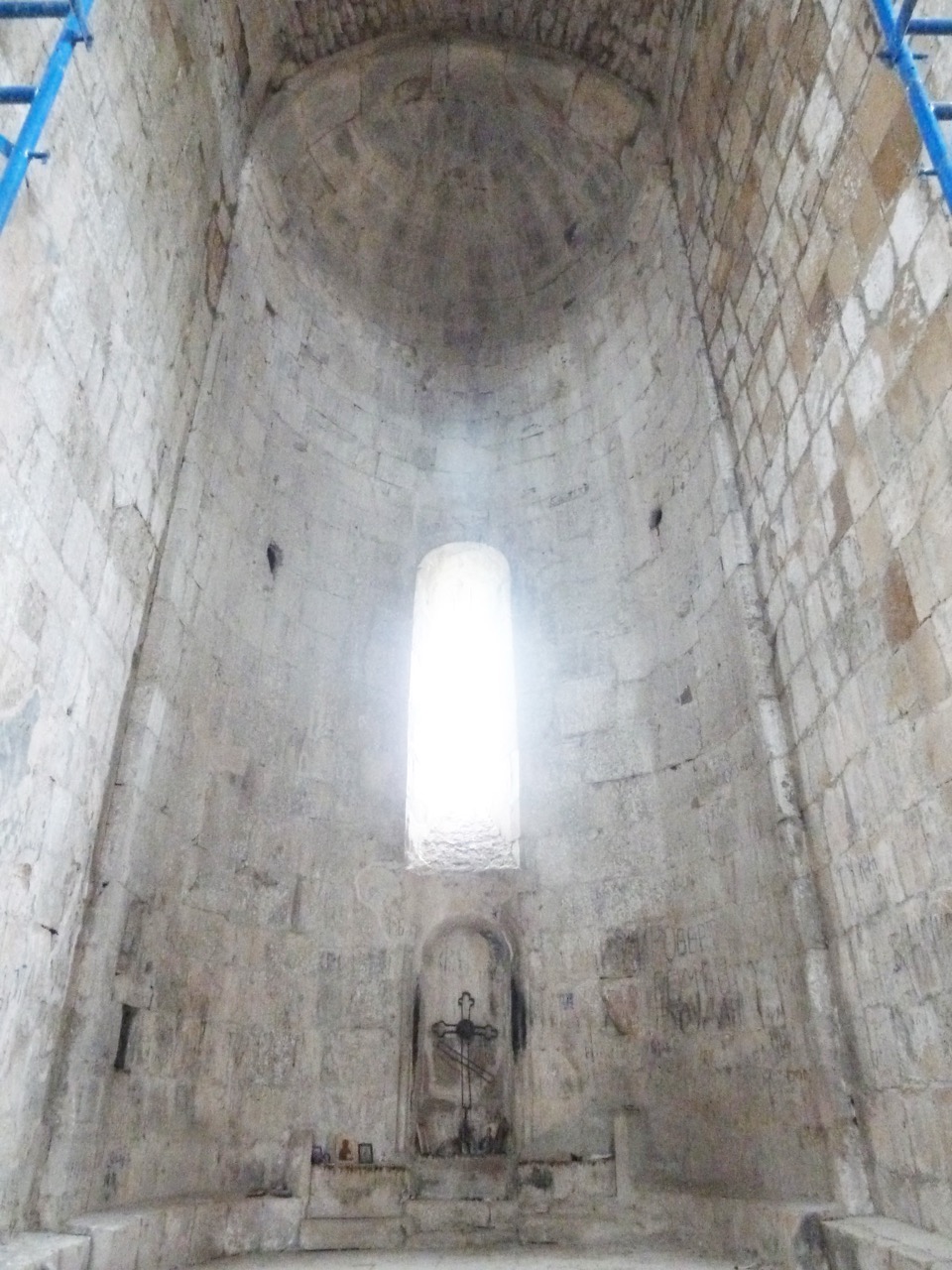
Bedia cathedral, sanctuary
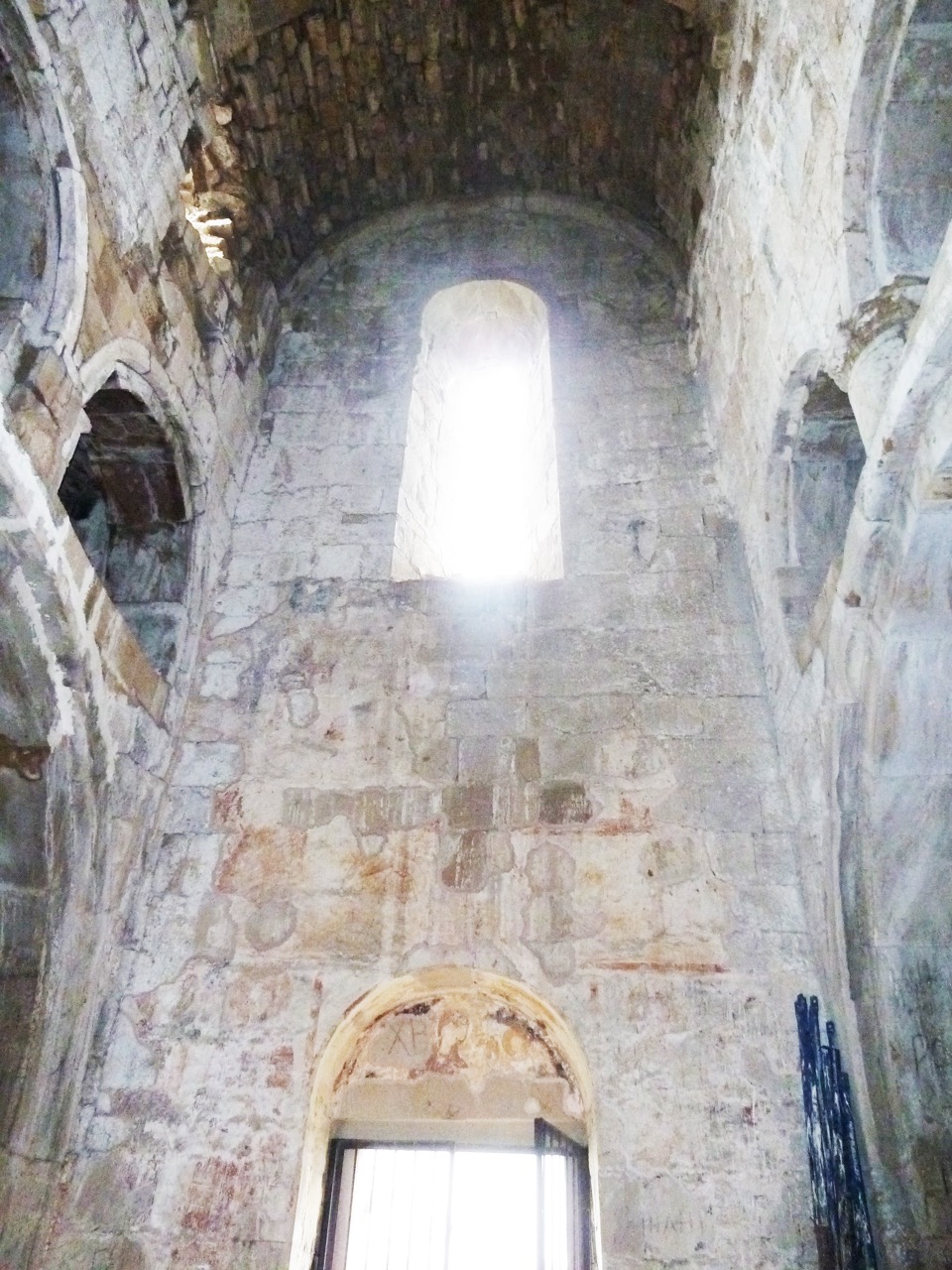
Bedia cathedral, west cross-arm
Beautiful stone carvings, undoubtedly of the 11th century, are still visible, incorporated into the 14th century masonry, along with inscriptions in old Georgian Asomtavruli script, naming many famous clerical and lay persons of different periods, including that the chief mason-builder, Suimeon.

Bedia cathedral. Stone slab with carved ornaments in tympanum, 11th c.
The architectural type of the this church, with four massive piers holding up the dome, and an upper gallery in the western cross-arm, is rather characteristic of Georgian Christian architecture. The three projecting apses from the east, however, reveal a familiarity with Byzantine architecture as well.
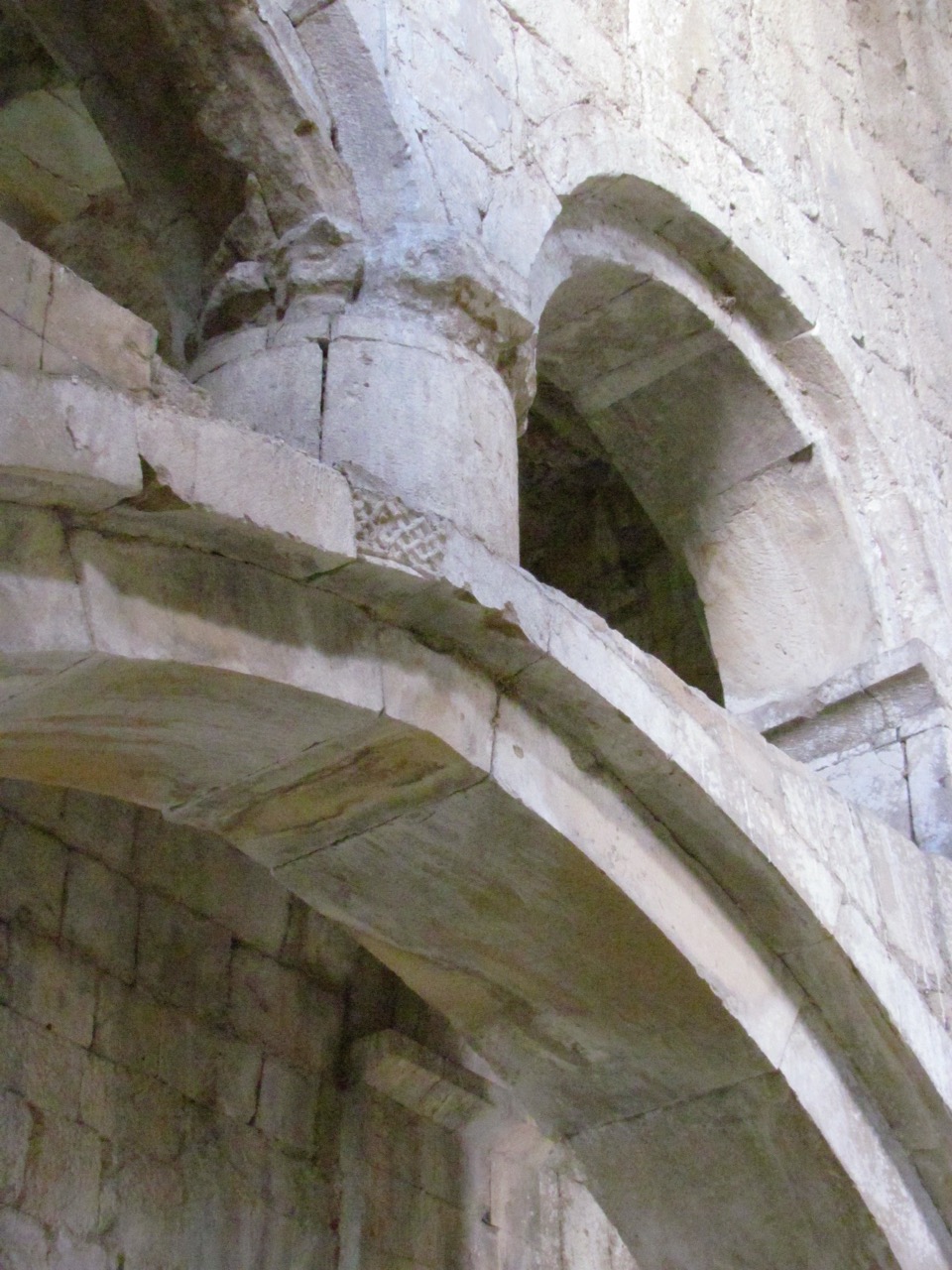
Bedia cathedral, west cross-arm, upper gallery
According to common practice at the time, the interior of church was most probably decorated with murals in the early 11th century, commissioned by Bagrat III. The majority of the surviving fragments, however, appear to belong to the 14th century, including the portrait of Bagrat III, King of the united Georgia. It is likely that his portrait was originally painted in the church and then repainted in course of renovation works in the 14th century.
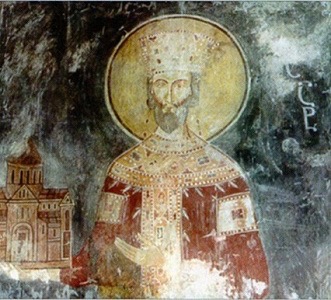
Bedia cathedral, south wall. Portrait of the king Bagrat III Bagrationi (copy), 14th c.
Since this historic region of Georgia is currently under Russian occupation, it is difficult to confirm whether the portrait has survived. Most likely, it was demolished in the 1990s.
Today, only faint traces remain of what were once excellent paintings. Yet it is still possible to identify many scenes and figures. Regarding the ktetor (donor) portraits, only copies remain (housed in the State Museum of Art in Tbilisi), as most of the originals were deliberately destroyed over the past decades.

Bedia cathedral, west wall, tympanum of the west door, the Virgin with the Child and angels, 14th c.
Some wall paintings are preserved in the sanctuary apse, where the figures of the Fathers of the Church are depicted facing the central axis. Above them are fragments of the Hospitality of Abraham in the bema. A row of busts of the saints in medallions is visible on the south and north walls above the figures of the ktetors. Scenes of the Life of Christ, including Christ and the Woman of Samaria and Healing of the Blind Man, have also survived.
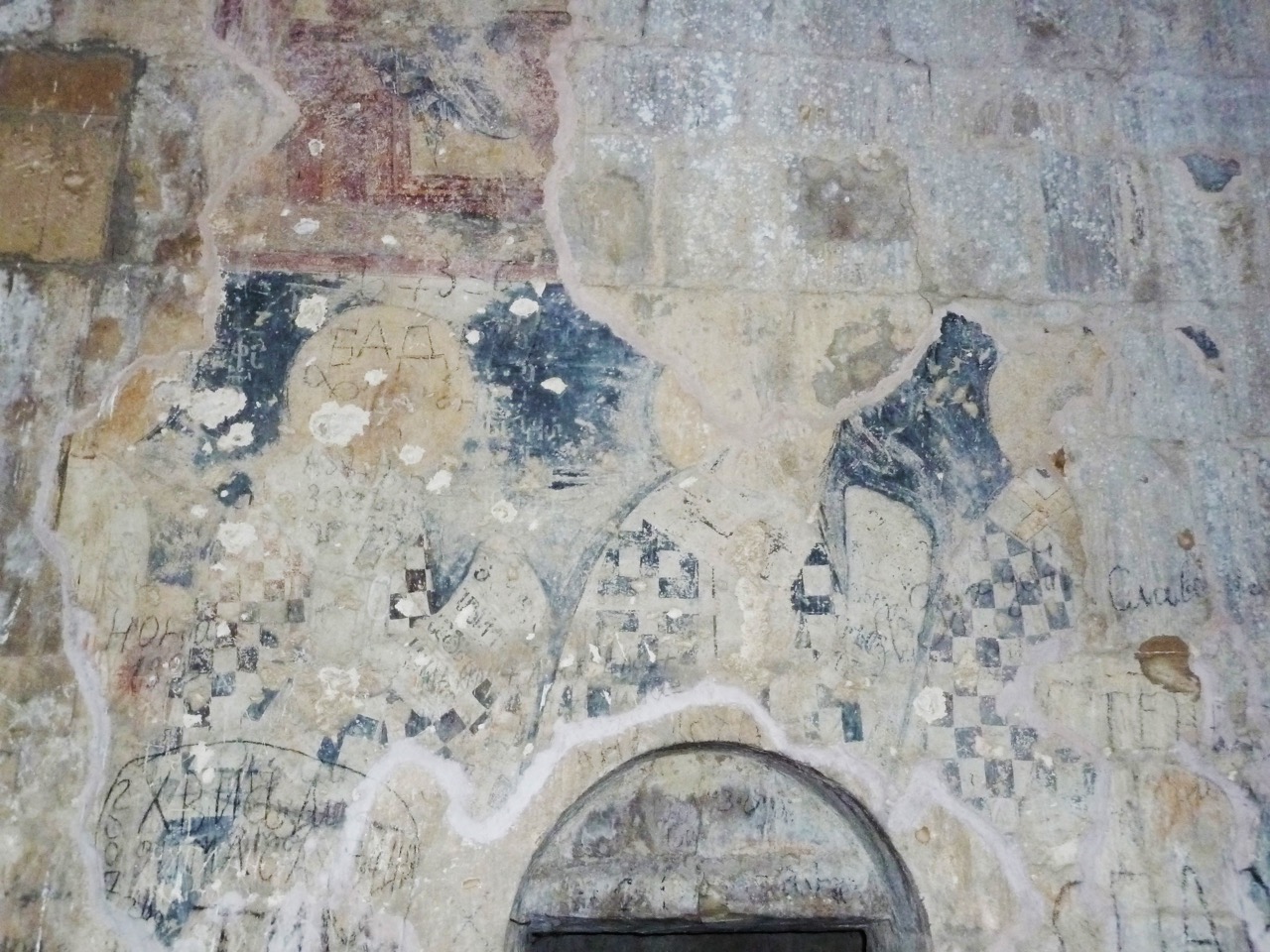
Bedia cathedral, sanctuary, Fathers of the Church; Hospitality of Abraham, 14th c.
On the west wall, the figures of Emperor Constantine and Empress Helene holding the True Cross, are visible. Based on various smaller fragments, it is assumed that a large composition of the Dormition of the Virgin, including the Ascension of the Virgin, was once depicted here.
In the tympana of the entrances, half-length figures of Christ-Emmanuel flanked by the Apostles Peter and Paul (south entrance), and the Virgin with Child, accompanied by angels (west entrance), are preserved.
On the north wall, there are fragments of a family portrait of the Dadiani, the ruling feudal family of Samegrelo, a powerful principality in western Georgia that included Abkhazeti. Four figures are depicted, each identified by inscriptions dating to the 14th century.
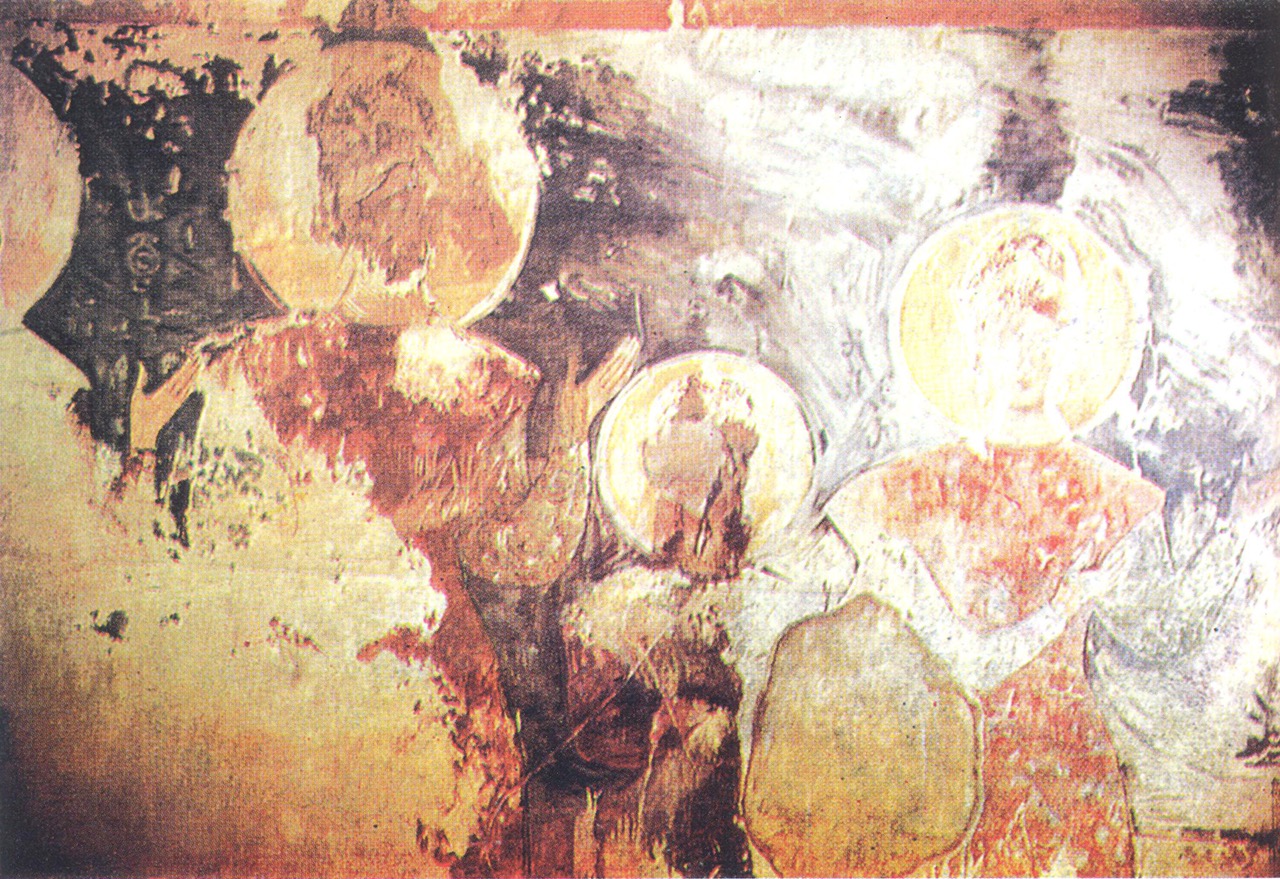
Bedia cathedral, north wall. Portraits of Dadiani family. 14th c.
On the south wall, next to the portrait of Bagrat III, are depicted a woman with a young man, identified by inscriptions as “Queen of Queens” Marekh and her son Giorgi Dadiani, the Minister of Court of the Imereti Kingdom (16th c.). Almost all inscriptions are written in Asomtavruli script.
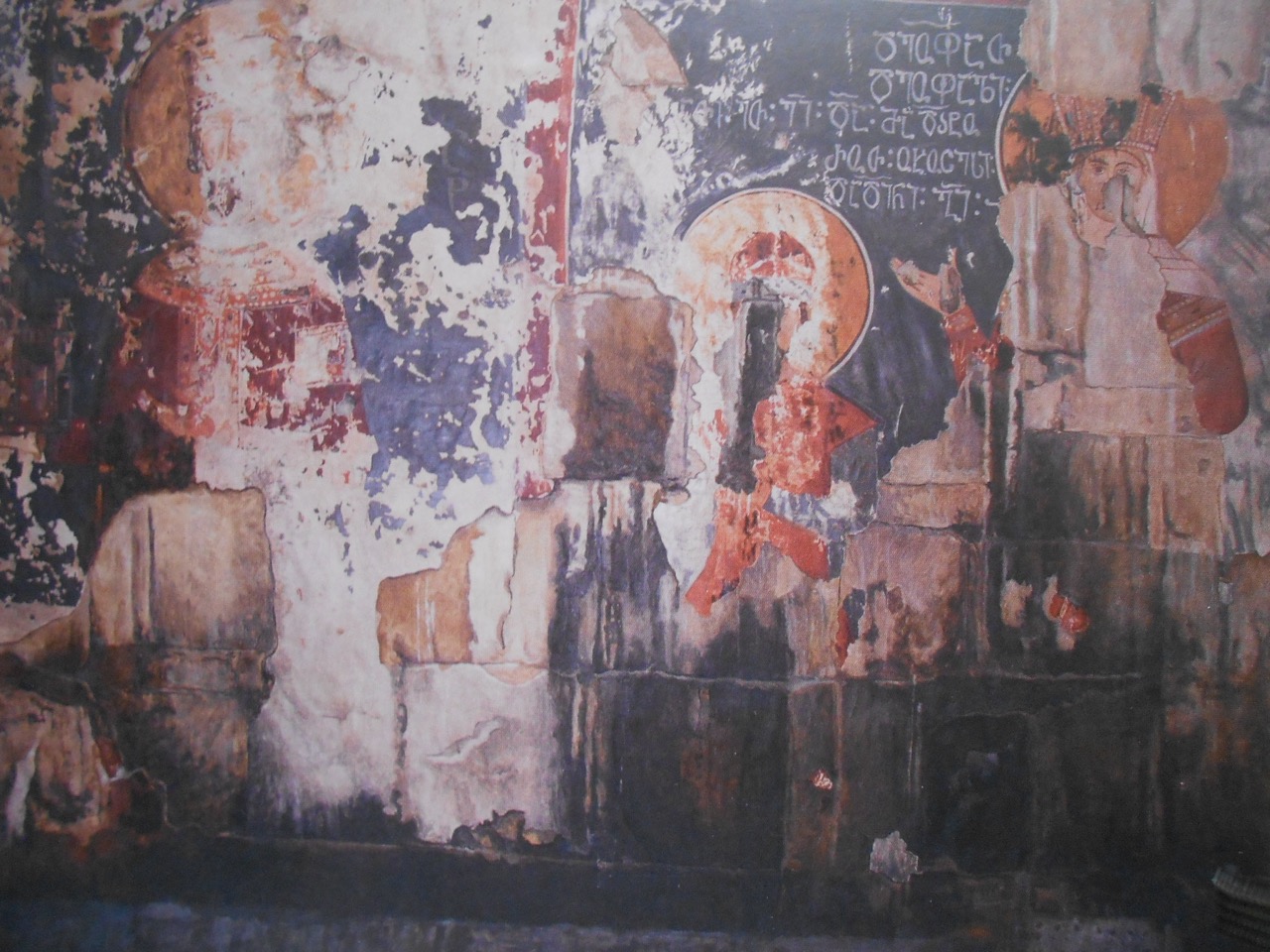
Bedia cathedral, south wall; King Bagrat III, 14th c.; Princess Marech, and her son Giorgi Dadiani, 16th c. (copy)
After the Russian Empire annexed the Imereti Kingdom in the 19th century, including the Abkhazian principality, and, later, in the Soviet period, the Bedia monastery was left isolated and half ruined.

Bedia cathedral, view from north-east
According to the late 19th century descriptions, part of the dome and the ashlar façade were still standing, although in poor condition. In the early 20th century, Russian monks dismantled the dome and removed the ashlar facing, intending to carry out restoration of the church. However, the renovation was never completed and the church remains in its ruined stated to this day, unfortunately inaccessible to Georgian restorers and scholars.

Bedia chalice, chased gold; 999. (State Museum of Art, Tbilisi)
One of the masterpieces of medieval Georgian metalwork, the Bedia Golden Chalice (dated 999 and housed in the State Museum of Art, Tbilisi), is closely associated with the monastery. Made of pure gold, it features chased figures of the enthroned Christ and the Virgin surrounded by the Holy Apostles. The Asomtavruli inscription on its rim names its commissioners: Bagrat III and his mother Guranducht.